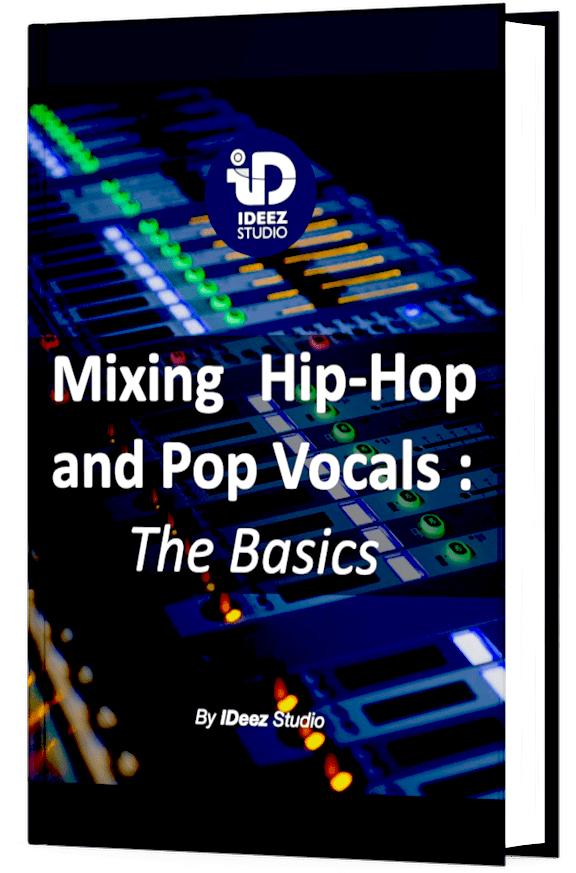Have you ever wondered why Universal Audio’s Apollo interfaces are so expensive? And what’s the difference between an Apollo and an entry-level interface? I’ll give you the full answer in this article!

Here are all the reasons why Apollo interfaces are so expensive:
- DSP processing
- Preamps
- Digital inputs
- High quality conversion
- Overall robustness and performance
- Advanced routing possibilities
- Accurate meters
All these things might seem subtle to you if you’re still in the early stages of learning about sound. But as you’ll see when you read this article, each aspect justifies the rather high selling price of interfaces such as the Apollo.

1. DSP Processing
The DSP processing available in Apollo interfaces is probably the main criterion that justifies its very high prices. It’s an aspect that can increase your productivity tenfold in the recording phase. But… what exactly is it?
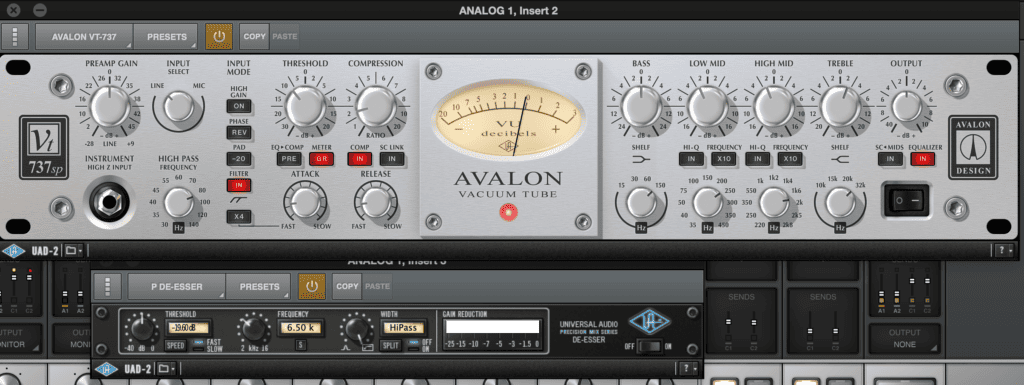
What is DSP Processing?
In audio, DSP processing refers to any plugin processing handled by a dedicated external device. This is the opposite of native processing, which refers to any calculation performed by the computer’s internal CPU.
In mixing or production situation, DSP processing has the advantage of lightening the load on your computer’s processor. But, it can also be a disadvantage, as the plug-ins associated with the manufacturer will, for the most part, not be usable without their external device.
The DSP can come in very handy if you don’t have powerful enough processors in your computer. Even if they are gradually losing their value due to the increasingly impressive power of the latest computers.
ℹ️ Need a more in-depth comparison between native and DSP plugins? You will find all the answers in this article on What Is The Difference Between Native And DSP Plugins ?
UAD plugins
In the case of Apollo interfaces, you’ll find only UAD (Universal Audio Digital) plug-ins within the interface. And in addition to their high audio quality, they have one major advantage: they produce zero latency.
In other words, you can use UAD plug-ins within the virtual interface without creating the slightest latency. We’ll be talking more about this virtual interface later in this article.
But DSP processing is especially advantageous for headphone monitoring. With this processing, you’ll be able to send a latency-free signal back to the headphones, processed by quality plugins.
And headphone monitoring is essential if you want the best sound from your recordings. This is particularly true in the field of music. Good monitoring in an artist’s ears will always make him or her feel more “free” and “relaxed”.
And then… the quality of UAD plug-ins must also be highlighted. In their list of plugins, you’ll find emulations of legendary preamps, compressors, EQs and more. Used properly, these plugins can make your recordings much richer in terms of frequency and dynamics.
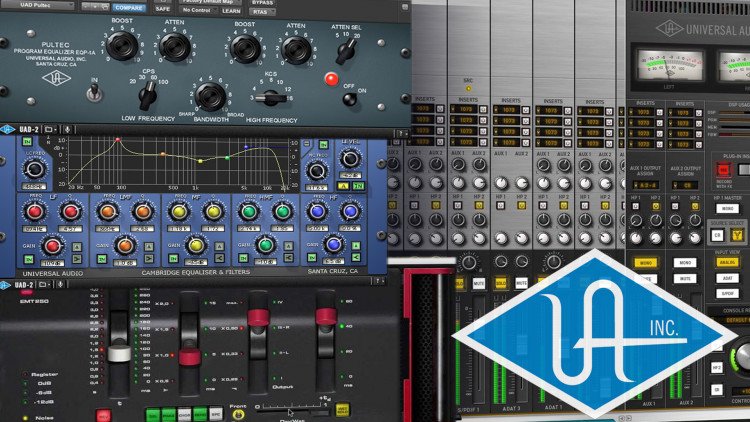
2. preamps
When it comes to recording, the choice of microphone is essential, but so is the quality of the preamp. And with Apollo interfaces, you’re well served!
In addition to using Unison technology for true-to-life emulations, the preamps available on Apollo interfaces are of impeccable quality.

They’ll deliver clean, stable amplification with a much better signal-to-noise ratio than many of its competitors.
Even with the least sensitive microphones (Shure SM7b, for example), you’ll normally have no trouble amplifying your signal to line level without the slightest hiss, and with great precision in the recorded audio.
Combine them with the plug-ins integrated into the interface, and you’ll get breathtaking recording quality and tone!
ℹ️ If you’re recording vocals, you might also decide to opt for external preamps. If so, I recommend you read this article on The 9 Best Mic Preamps For Recording Vocals (Any Budget)
3. Digital inputs
You thought the Apollo Twin only had 2 inputs, the Apollo x6 only had 6? Well, in reality, Apollo interfaces can handle much more than that!
In fact, thanks to the digital input, Universal Audio interfaces can use the ADAT protocol to record up to 8 different sources simultaneously. In addition to the mic and line inputs available on the interface itself. But… what is the ADAT protocol? And how do you use this digital input?
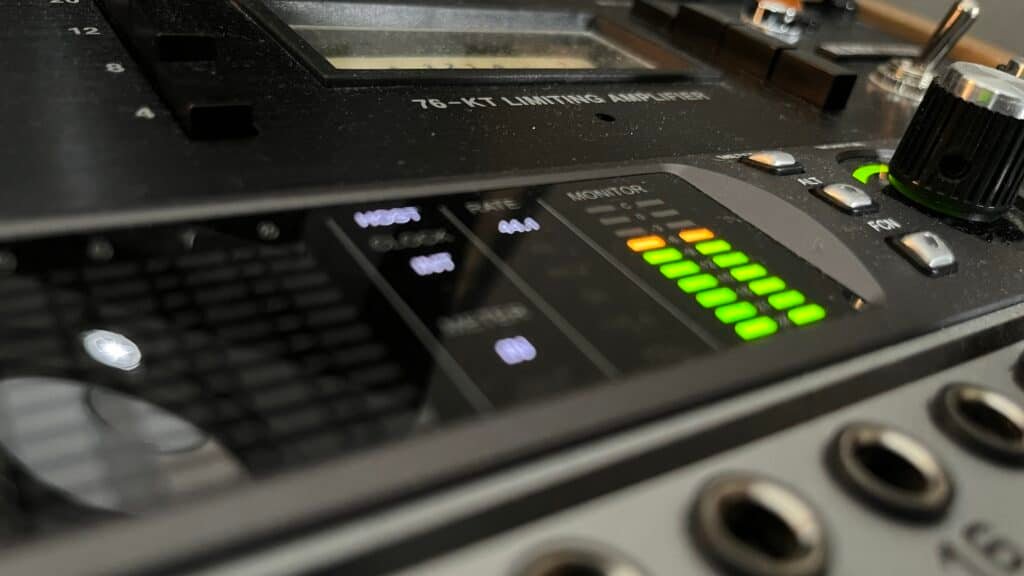
What is ADAT in audio?
In audio, ADAT is a digital protocol that allows up to 8 audio channels to be transported from one digital device to another, and vice versa. The amount of audio channels is reduced to 4 in 88.1 kHz or 96 kHz and to 2 in 176.4 kHz and 192 kHz.
If this still seems unclear to you, you need to understand that in audio, the audio signal doesn’t always pass through audio cables such as XLRs and jacks.
Since the 90s, technology has also enabled us to transport audio signals through a single digital cable. With ADAT, it’s through optical cables that the signal can travel.
And while it may sound crazy if you don’t know much about audio (yet), a single cable can carry up to 8 channels simultaneously.
Thanks digital!
ℹ️ Want to learn more about ADAT and the best preamps you can use with you interface? You will find everything you need here: Which ADAT Preamp To Use With Your Apollo Interface?
How to use ADAT with an Apollo interface
To use the digital capabilities of an audio interface (Apollo or not), simply use it with a preamp with a digital output. It’s that simple! Just connect the output of your preamp to the optical input of your Apollo, and you’re done!
Just make sure you use the same sample rate on your external preamp, your Apollo and your computer. Or you’ll ruin all your recordings!
I also advise you to opt for an 8-channel external preamp to take full advantage of the ADAT protocol.

Quick tip!
On larger Apollo models, two digital inputs are available. But what’s the point? To increase the number of simultaneous channels to 16? No, that’s impossible with ADAT protocol. But it will actually help if you’re recording at sample rates higher than 48 kHz. Let me explain…
Here’s a “classic” situation: a Toslink cable linking the optical output of a preamp and the input of an Apollo interface.
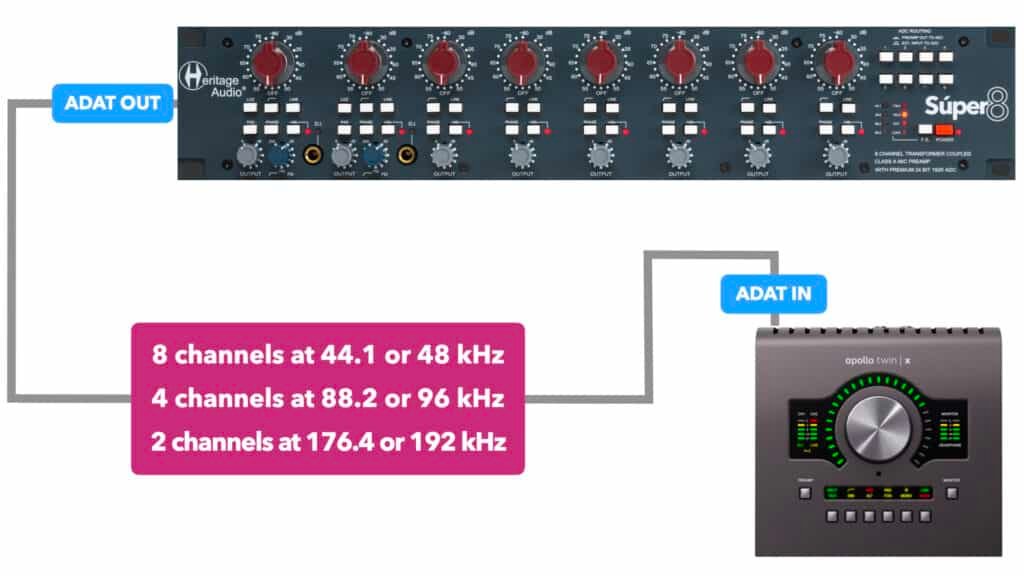
As you can see, as soon as the sample rate is doubled, the number of channels that can be transported simultaneously is halved. Which seems quite logical!
Now take a look at this second situation, in which the two devices are linked by TWO Toslink cables.

In this situation, the number of channels that can be transported simultaneously in 44.1 and 48 kHz doesn’t change. But for higher sampling rates, the number of channels doubles!
This can come in very handy if you want to record in 88.2 or 96 kHz for more complex sessions with more sources to record. Think about it when you buy your next Apollo!
4. High quality conversion
For the audio you record with your microphone to arrive in your DAW in a certain waveform, it has to be converted to digital. And that’s where audio interfaces come in.
Because, no, audio interfaces aren’t just for amplifying your recordings and outputting your mixes to speakers or headphones. Above all, they allow you to convert the electrical signal into a digital one, so that it can be read by your computer.
Sounds like a pretty obvious process, doesn’t it? However, many entry-level interfaces don’t convert the signal properly, and return a poor, erroneous digital signal to the computer. That’s where the Apollo interfaces come into their own.
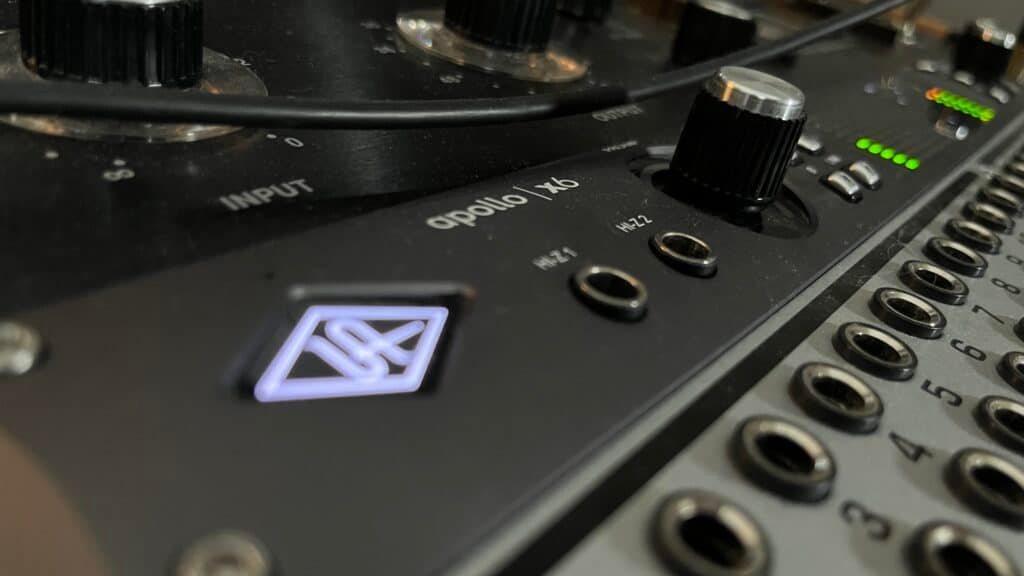
Because Universal Audio’s interfaces feature high-quality converters. They offer a wide dynamic range, low harmonic distortion and impressive accuracy.
The stability and precision of Apollo converters will enable you to make recordings of far greater depth than on more common interfaces such as the Focusrite 2i2.
Poor converters can destroy the quality of your recordings. But good converters like those on Apollo interfaces can enrich them, making them more stable, cleaner and more reliable.
Looking for a professional sound engineer specializing in pop and hip-hop music ? You’re in the right place! Mixing, mastering, production, editing,… we’ve got it all covered!
Let’s start now!
5. Overall robustness and performance
Aside from all the positive aspects of Universal Audio’s interface, we have to be honest: these interfaces breathe quality. With an interface like the Twin in your hands, you don’t feel you’re dealing with a toy. As is all too often the case with certain low-end interfaces.
It’s a truly professional tool, built with high-quality components and an inspiring, well-designed layout.
Analog inputs and outputs are solid and robust. So is the digital input. The buttons and knobs of the physical interface are also very rugged on the front panel.
All in all, Apollo interfaces will last for years without showing the slightest sign of fatigue. And that’s good for your wallet! Buying an Apollo should be seen as a long-term investment.
6. Advanced routing possibilities
With an Apollo interface in your studio, you can create an infinite number of internal routings. I wouldn’t advise you to venture too far into this if you’re still a novice in the field of sound. But if you’ve got the skills, go and learn more about routing!
Recording
For recording sessions, Apollo interfaces are a great luxury. They allow you to manage headphone monitoring completely independently.
Thanks to the auxiliary and cue systems available in the virtual interfaces, you can send a completely different signal to the monitoring headphones and your DAW.
You can create both very simplistic and very complex routings, and that’s exactly why Apollo interfaces score so highly.
You could, for example, decide to send a compressed signal with reverb to the monitoring headphones, while recording neither of these two processes in your DAW. Or you could simply decide to record the compression – there’s very little limitation with these interfaces!

Mixing
In mixing, production or mastering sessions, Apollo interfaces can also be a great tool for using external hardware such as EQs, compressors, reverbs or whatever you want to use.
In the virtual interface, the available inputs and outputs are clearly indicated, so you can easily manage your external analog routing.
Another big advantage is that you can easily modulate your input/output matrix to suit your setup and workflow.
Of course, it’s with rack-mountable interfaces that you’ll really be able to make the most of all your external equipment. But even with a Twin, you’ll be able to use hardware gear with ease.
7. Accurate meters
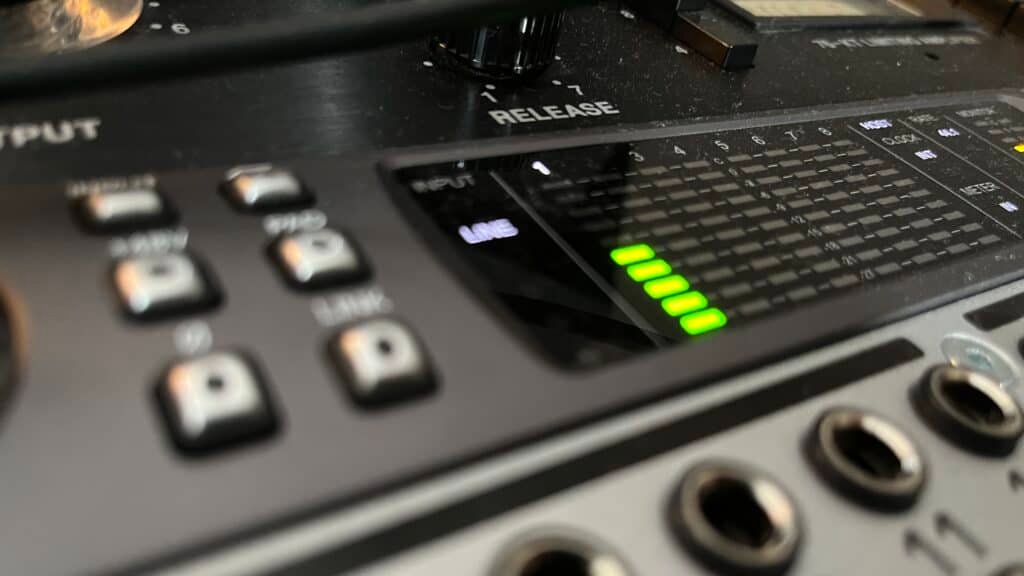
This aspect may seem rather trivial to some. And yet it is essential to ensure good gain staging during your recordings.
In fact, unlike many interfaces that only work with color codes (green, orange or red), here you’ll be able to enjoy precise, well-calibrated meters.
If you use DSP plug-ins, you’ll also be sure to attack them with ideal input gain.
This is also very useful for monitoring. They’ll quickly show you whether you’re mixing/producing your music at the right level.
When it comes to sound, working with good meters is essential. You’ll be well looked after with an Apollo interface!

Do you need an apollo interface?
But now the question is: Do you need an Apollo interface? Well, that mostly depends on where you stand in terms of sound skills.
If you’re still at the beginning of your learning process, I’d advise you to invest in a more affordable audio interface. Chances are, you won’t hear much difference between an affordable interface and an Apollo.
You could also get lost pretty quickly in the way Apollo interfaces work. Keep in mind, though, that these are interfaces designed for professionals.
The Focusrite 2i2 is the best-known audio interface. But I also like the Yamaha AG06. This interface, which also serves as a mixer, offers very surprising sound quality for its price! And it has features similar to an Apollo. If you’d like to know more about this interface, then I suggest you read this article, which discusses it in greater depth.
But if you do a lot of recording and/or mixing and production for clients (big or small), maybe taking a step could be a good thing.
If you’re planning to become a professional sound engineer, or at least get close to one, an Apollo interface is definitely a good investment!
Not only will it provide you with much better audio quality in every respect, it will also satisfy your next customers much more.
Conclusion
One of the reasons why Apollo interfaces are so expensive is that their overall quality is far superior to more “common” interfaces. Converters, preamps, build quality, DSP processing… many aspects can justify their very high prices.
But despite this, isn’t Universal Audio pushing their prices too far? It’s an eternal debate, and it’s up to you to judge whether it’s worth the investment or not. But… quality always comes at a price!
If you have any questions about Apollo interfaces or about anything in the field of audio interfaces, please contact me, I’m always very happy to help!
Related Articles:
My favorite tools for mixing pop and hip-hop music:
Plugins
In the field of auto-tune, I’m convinced that nothing’s better and more efficient than Antares Auto-Tune Pro. As for the EQ’s, FabFilter Pro-Q3 and Slate Digital Infinity EQ are, in my opinion, the best tools. For compression, I have 2 favorites plugins: Waves RComp and UAD EL8 Distressor.
As for reverb, I’m a big fan of the Soundtoys Little Plate, but generally, I go for the Valhalla VintageVerb for its versatility. I also love the Arturia Rev PLATE-140 and the UAD Pure Plate for its organic side.
Headphones
The closed headphones I love and will always love using for mixing pop and hip-hop music are the Beyerdynamic DT-770. As for the best open-back headphones, I use the Sennheiser HD600 headphones, and I’m really happy of them!
Monitors
Having a pair of Yamaha HS7 in its studio or home studio is always cool for more excitement while listening to your mixes. The Adam Audio T7V monitors are also super accurate. In my studio, I also have a pair of Genelec 8030 for their reliability.
Hardware gear
For anyone who wants to start using hardware in their mixes, I always recommend these 2 units from Klark Teknik: the EQP-KT and the 76-KT. Don’t forget to use good converters, such as the Apollo interfaces. This is essential for a good rendering.



